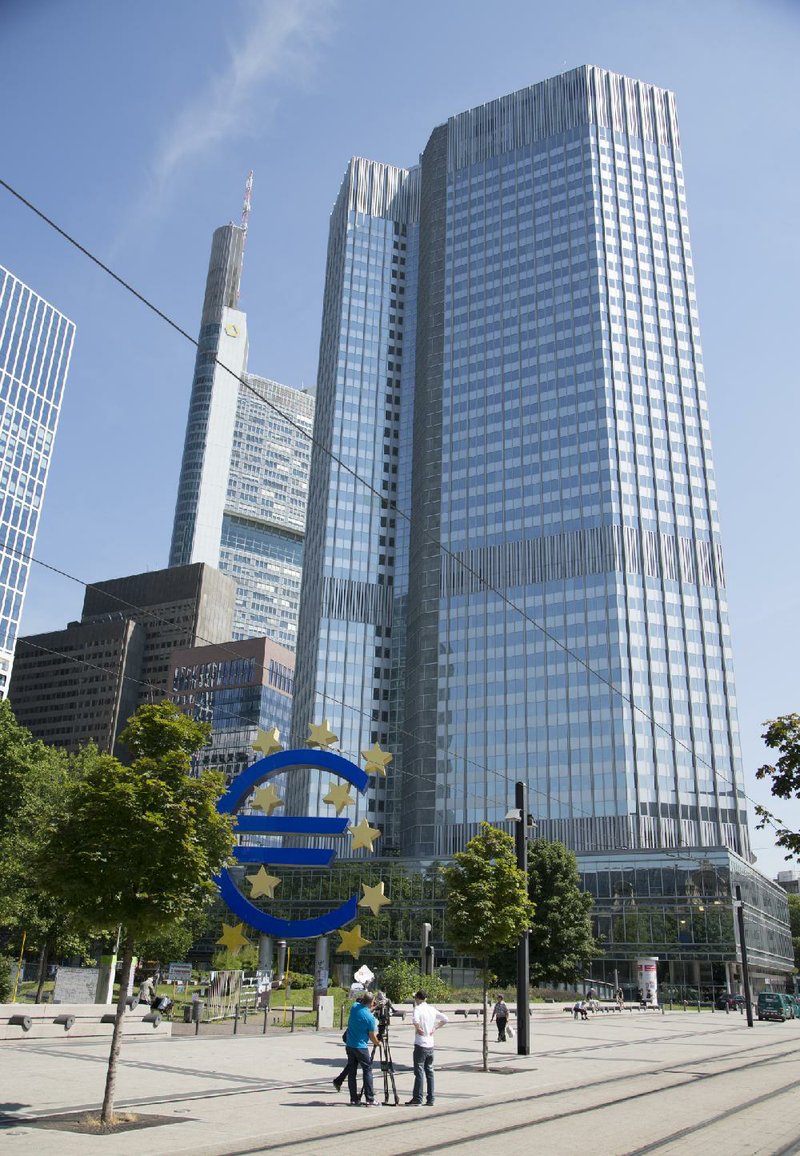The European Central Bank is overhauling the way it sets monetary policy, saying it will hold fewer meetings and publish minutes on its deliberations -- a bid to be more transparent as it vows to keep supporting the economy by any means available.
After the bank decided to keep its interest rates on hold Thursday, President Mario Draghi said at a news briefing that the European Central Bank remains committed to seeing the 18-country eurozone grow faster and emerge from a period of dangerously low inflation.
To help investors understand the central bank's thinking behind such decisions, Draghi said that, starting in January, minutes will be published, a move that puts the bank in line with other major central banks. Some investors had asked for greater transparency over the past few years, when uncertainty was high in markets amid the financial crisis.
Draghi said that from next year, monetary policy will be set every six weeks, instead of every month. That will help reduce market volatility by traders looking for action that is not always merited by economic fundamentals such as growth and inflation, he said.
"Maybe we should move to a six-month schedule," Draghi joked.
The European Central Bank's policy timetable will be very similar to that of the Federal Reserve, which meets eight times a year, usually every six weeks. Draghi stressed that the banks would not be synchronizing their meetings.
Marc Ostwald, a senior strategist at ADM Investor Services International, said that the publication of the minutes may, however, undermine Draghi's aim to have less market volatility.
"With eight meetings a year and an additional eight meeting-minutes release dates, the fact is that there will in principle be more, rather than less, 'event risk' surrounding central bank policy," he said.
Draghi on Thursday also fleshed out details of the central bank's latest plan to flood commercial banks with up to $1.36 trillion, one of the measures it announced last month, along with interest rate cuts, to help the economy and nudge up inflation. One of the problems afflicting the eurozone is that banks often hold back from lending to businesses and households.
Draghi said the program of loans to banks will help drive inflation back to the target of just below 2 percent from 0.5 percent currently. Under the program, banks can bid for the loans on a quarterly basis, either alone or in a group with other banks. That money will have to be loaned on to businesses, in the hope of increasing investment.
Draghi said that the recovery in the eurozone remained moderate and that inflation was subdued, but he said long-term inflation expectations were "firmly anchored."
"Geopolitical risks, as well as developments in emerging market economies and global financial markets, may have the potential to affect economic conditions negatively, including through effects on energy prices and global demand," Draghi said. Markets have been shaken recently by violent clashes in Ukraine and Iraq as well as gyrations in fast-growing Brazil and Turkey.
Another risk Draghi identified was that eurozone governments might slow down in overhauling their economies. European government borrowing rates have dropped in recent months, taking pressure off to make changes. The yield on 10-year Spanish bonds, for example, is now at the same level as that of U.S. Treasurys.
Draghi said the central bank's key interest rate will remain at the current level of 0.15 percent or lower for an "extended period of time" and that the central bank's governing council was unanimous in its commitment to use other monetary stimulus measures should inflation stay too low for too long. Low inflation, and in particular falling prices, can weigh on an economy as consumers delay spending in hope of bargains later.
Economic indicators suggest the eurozone needs all the help it can get. On Thursday, official figures showed retail sales were flat in May while the June purchasing managers' index -- a gauge of business activity -- from financial information company Markit fell to a six-month low.
The high value of the euro has also been a cause for concern. The currency remains relatively strong against the dollar, even though the Fed is discussing when it will start raising rates. Higher rates tend to increase the value of a currency.
Though Draghi stressed that the European Central Bank does not target a value for the euro, he noted the currency's strength was a problem through its effect on prices -- its high value tends to make imports cheaper.
The euro fell Thursday, though that was mainly beause of a strong U.S. jobs report. The currency was down at $1.361 from $1.365 before the U.S. report. Though it's down on its multiyear high of near $1.40 in the spring, the euro is well above its long-run average.
Business on 07/04/2014
